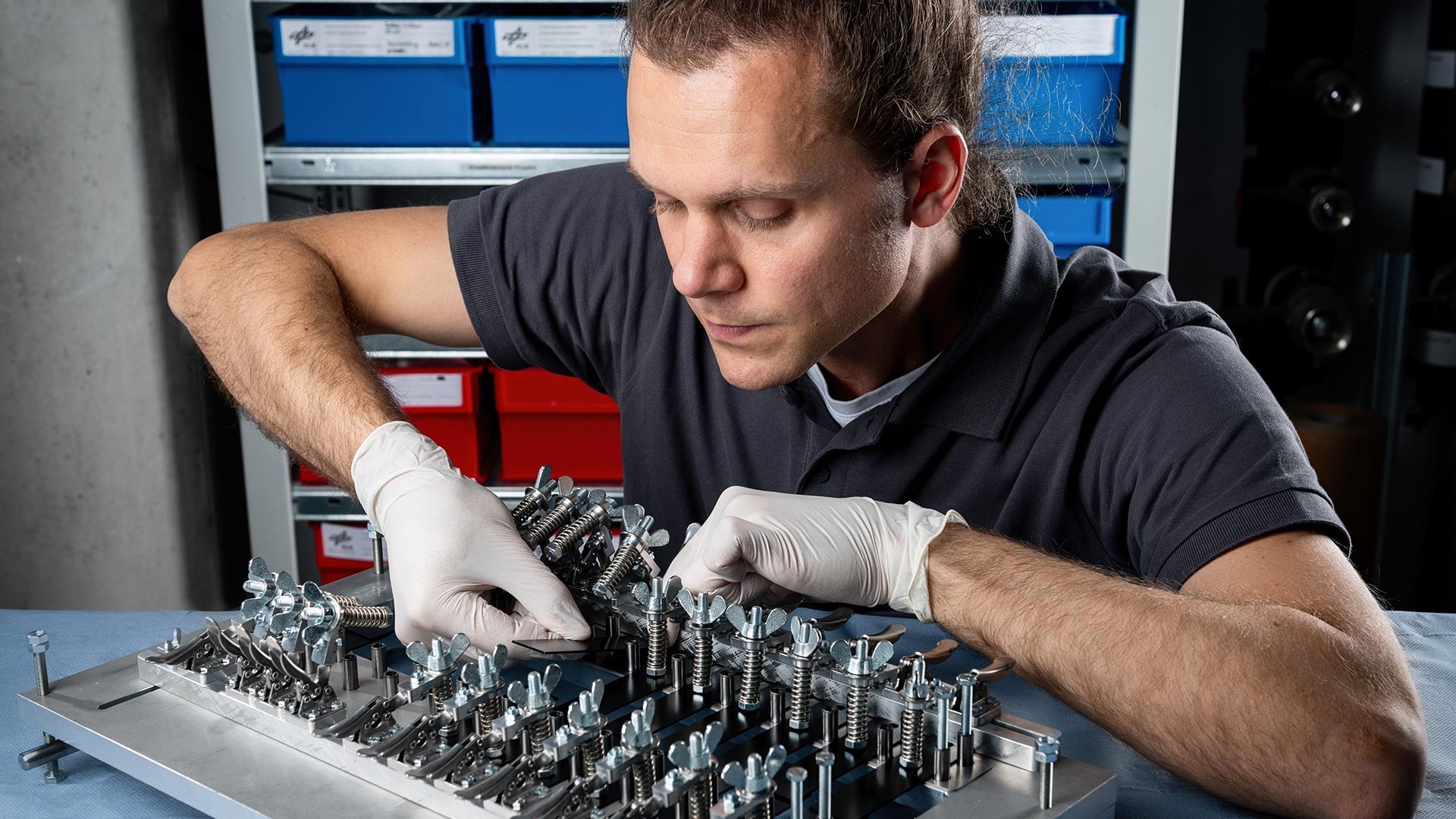Material and process applications - complete vehicle

How can we understand new materials and joining processes even faster and more comprehensively with the help of AI? How do we build cars from renewable raw materials? And how can we increase safety for everyone involved in the event of a crash? We are researching how materials and processes can be used sensibly throughout the vehicle. In doing so we identify new material solutions, research their properties, develop simulation methods and use generic components to demonstrate what the new technology routes can achieve.
What will we use to build the vehicles of the future?
It is our task to identify new material and process solutions for all road and rail vehicle structures and to make the best possible use of them. We understand the requirements of the overall system. On this basis, we identify material and process solutions, research the properties and demonstrate the potential of generic components. We have a great deal of experience in the field of lightweight metallic materials, such as aluminum and magnesium alloys. Furthermore, we are striving to make greater use of particularly sustainable materials in structural applications. Take wood, for example - here we are one of the world's leading working groups.
Joining technology
New materials and manufacturing processes enable new construction methods and change requirements in joining technology. To address these, we are developing new joining processes for complex material combinations. New solutions are needed, for example, for wooden structural components or for metallic high-performance materials. Recycling-friendly design is also playing an increasingly important role.
Modeling and simulation methods
For promising materials and processes, we develop modeling and simulation methods with which future users can calculate their new developments and map them in numerical simulations - from structures based on new material or process solutions to innovative joining processes. And it can also be complicated - practical, application-oriented methods for the simulation of "difficult" materials such as magnesium alloys or wood structures are our strength.
Materials testing and corrosion testing
We have many years of experience in the field of materials testing and corrosion testing, which we use for precise detailed investigations and for the development of new, improved testing methods and systems. Our ability to analyze processes in static and dynamic material testing (crash and vibration load) in detail makes us a sought-after partner when it comes to introducing new procedures or researching special material-specific effects.
Digitalization and artificial intelligence
In the research area of digitalization and AI, we use the potential of a networked and digitalized process chain to combine materials, joining processes, corrosion protection, modelling methods, simulation and testing methods. Through data analysis and machine learning, we find innovative approaches to exploit synergies in material testing and joining technology and significantly improve analysis and forecasting capabilities. With our domain knowledge, we identify and research new areas of application for the use of AI, such as in the field of circular economy and recycling.
Interested? Get in touch now
You are interested in new material and process applications in road or rail vehicles? Then contact us here:
